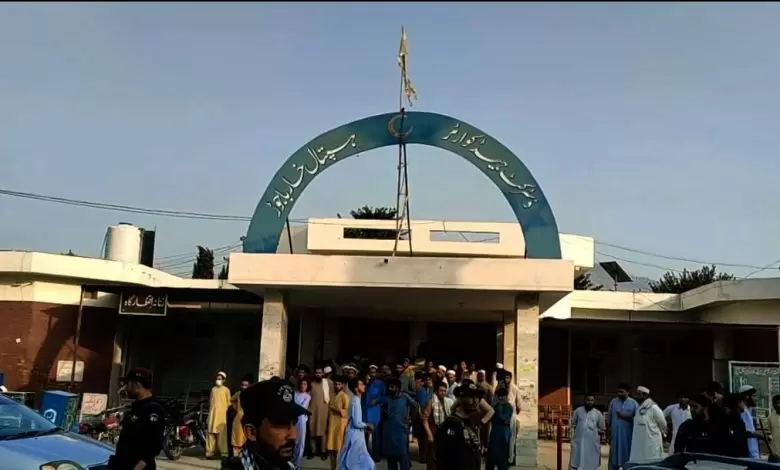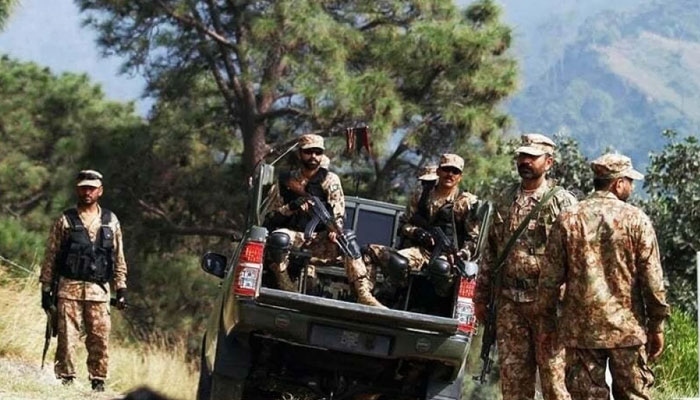Peshawar, one of the oldest living cities in the region, has derived its name from the term ‘Pesha war’ meaning "City of the artisans or skilled people". In olden times, artisans from other countries would visit Peshawar to introduce their artifacts to the locals.
As art and artisans thrived, various bazaars were named after respective trades or skills like Bazaar-e-Misgarran (coppersmith bazaar), Reti (ironsmith) Bazaar, Batair Bazan (quail market) and Chik Sazan (bamboo blinds bazaar). The main bazaar Qissa Khwani means ‘story-tellers’ bazaar.
One such bazaar-cum-mohallah of the city is Pakhi Garran (handfan makers in the local Hindko language) where handfan makers have been functioning since the pre-partition era. From the eastern side of the historical Chowk Yadgar, lies the 124-year-old Cunningham Clock Tower (Ghanta Ghar). When you come from Bazaar-e- Kalaan, at the right side of the road Pakhi Garan Bazaar’s gate is situated facing Ghanta Ghar. Shops are located under the houses in this bazaar-cum-mohallah.
Also Read: Kurram District Land Dispute: Ceasefire Agreed Amid Deadly Clashes
The mohallah derived its name from handfan makers and sellers. At the beginning of the bazaar, an electronic market is emerging. Now a few shops are selling ‘tinka sazi’ (straw-making) items and two or three of them can be found selling handfans as well.
Shehzad Fahad, in his early forties, has been in the business of fanmaking for the last almost 25 years. His father, Muhammad Anwar, had started this business at a young age.
Talking to the Tribal News Network (TNN), he said that six people are involved in the making of a handfan. They get the raw material (straw) from Tall in the Hangu district and Afghanistan. Ladies in Samar Bagh, Chaabiyan, and Fatu Abdur Raheem villages of Peshawar weave it into a leaf. Then it is hammered to smooth the straws out. A person attaches handles to it. Then stitching work is done on it. This work is done throughout the year to prepare the stock that is sold only in summer. The handfans have different names according to their designs like 'shehneel' (velvet), ‘kundi’ (handle), ‘zanjiri’ (chain), nagina (jewel), and ‘karela’ (bitter-gourd). These are sent to Haripur, Abbottabad, Mansehra, Charsadda, and Mardan in Khyber Pakhtunkhwa and Hassanabdal town and other areas of Punjab province for onward sale.
“In Hassanabdal, they like Kundi fans. They do zari work on it for weddings. Then there is Zanjiri that goes to Haripur. In Abbottabad and Mansehra, they like nagina. People in Punjab like intricate fans while in Peshawar, they like simple fans,” the craftsman said. In Punjab, the fan is sold throughout the year. The reason is not its weather but the tradition of the province.
The fans in kundi and zanjiri designs are sent to Punjab throughout the year. They embellish it with ‘shehneel’ cloth and do embroidery work on it writing scripts like happy marriage and drawing birds’ figures like a couple of pigeons and parrots. This may add to the price of a fan depending on its fineness of work like up to 1000 rupees. While a simple fan is priced at Rs 50," he added. “In KP, when you go to someone’s house on a happy occasion, you bring them sweets while people in Punjab bring them handfans with intricate work. The fans sent there from Peshawar are further worked upon in their villages by ladies who put shehneel cloth on it, do zari and silver thread work on it so that it can be more presentable,” Fahd elaborated.
In olden times, hand fans were in great demand in summer. Shehzad’s father tells him that they used to export handfans to India through railways. During peak season (summer days), shopkeepers used to compete in terms of business trying to engage more and more workmen and households doing work for them. Then with the arrival of electricity in houses, electric fans replaced them. Air conditioners, uninterruptible power supply (UPS), and now solar system have affected their business badly. “We have to invest in raw material and pay to our workmen. The sales have decreased to next to nil. We cannot even store the stock in godowns as straw gets fungus in humid weather. Every investor is bearing a loss of almost 10 rupees in one handfan as a simple handfan costing them Rs 60 is being sold at Rs 50,” he said.
To cover this loss, the "Pakhi Gar" first added other straw items to their shops like brooms, straw hats, straw mats, and bread baskets. Now they have added plastic items to their shops like wipers and floor brushes to earn some bucks. “In this age of price hikes, we also have to keep our families and pay inflated power bills,” added the craftsman.
“This is not a medicine that you need anyway. This is a skill that is vanishing with generations and times. Now only five out of 50 households are doing this work. We are left with a little business with Punjab other than the ‘seekh’ kabab sellers who need only simple hand fans for their barbecue grills,” Fahd said. He added that the handfan business and a market exist in Kalabagh town of Punjab but they are also facing the same difficulties. The government has imposed a tax on coconut straws; Rs 1500 on 40 kilograms. They should facilitate the industry instead of imposing taxes, he went on to say, adding that the bazaar now has more solar system shops, he plans to turn to that business the next year like the other few shops that have already done that.
In the past, the government made efforts to revive the glorious art and culture of the city on an individual and collective basis. An Artisan Village set up in 2012 by the KP government was among such endeavors. Established in restored cells inside the historical Gor Khatri Archaeological Complex, the project was aimed at reviving the dying arts and crafts of the city. Tinka sazi was also included in it.
At the Artisan Village trainers would work to impart skills to trainees. There were 18 master trainers and each had two trainees. The project completed three years of its first phase. As the Artisan Village was functioning inside historical Gor Khatri, a cultural landmark of Peshawar, the Archaeology Department of KP had come forward to fund the project in the next phase but that was not done. Handfan-making is a craft that needs to be revived. The revitalization of the Artisan Village Project and making this skill part of the scheme will be a step towards transferring the techniques to the younger generation.
2.jpeg)
1.jpeg)
09 Jul, 2025





1.jpeg)
09 Jul, 2025